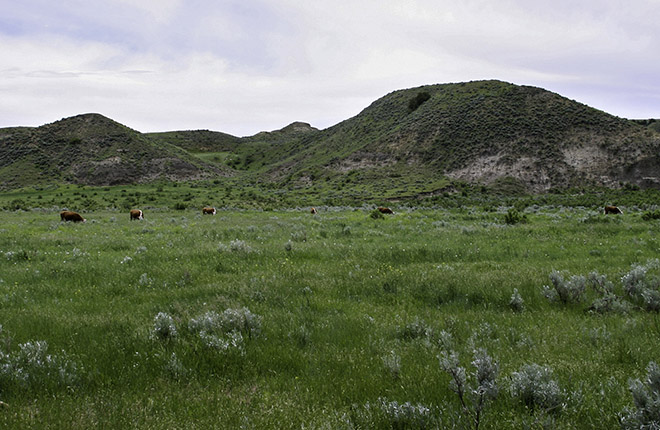Rangeland Grasses Recover Quickly After Fire
There is some good news for at least some beef producers in western states: They might not have to wait 2 to 3 years after a spring wildfire to graze their cattle on federal rangelands.
Lance Vermeire, an Agricultural Research Service (ARS) ecologist in Miles City, Montana, found grazing within a year after a wildfire doesn’t harm grass and can provide just as much forage as sites that haven’t burned. At stake is access to the mixed prairie grasses covering federal rangelands in western states.
About 4 million acres of U.S. rangelands burn every year. Not all of that acreage is suitable for grazing, but millions of suitable acres do burn in wildfires in any given year.
In the past, the Bureau of Land Management and the USDA Forest Service both generally recommended up to 3 years of rest from grazing after a fire, based on a theory that the grasses native to the dry climate of the northern prairies need that much time to recover. However, both agencies are shifting away from that position—in large part because of findings by Vermeire and his colleagues.
Vermeire has found in a series of studies that native grasses usually survive wildfires. When a fire sweeps through, it takes the dead plant material from the surface, but grass grows back quickly because most of the plant is below ground and escapes long-term damage. The key to grass growth is the amount of rainfall, not whether there’s been a wildfire, he says. Moreover, a fire can actually improve the quality of the forage by increasing growth of grass types with more protein, his studies show.
In a recent study, Vermeire and his colleagues evaluated the productivity of northern prairie grasses grazed at a site in South Dakota where a wildfire burned 10,680 acres the year before. They compared the productivity of grazed tracts to nongrazed tracts and found no significant differences in grass growth. The cattle also removed 47 percent of the vegetation from the burned sites – which is an average rate of removal.
The study was partially funded by the USDA Forest Service, and the results will help guide federal policies on rangeland management—and could bring some relief to some beef producers who depend on rangelands for forage.—By Dennis O’Brien, ARS Office of Communications.
Key Facts
- Federal rangelands are often closed to grazing for up to 3 years after wildfires.
- Some beef producers depend on access to federal rangelands.
- ARS showed that grasses recover quickly and can be grazed within a year.
- Federal agencies are reviewing policies in light of ARS results.
Full Story








